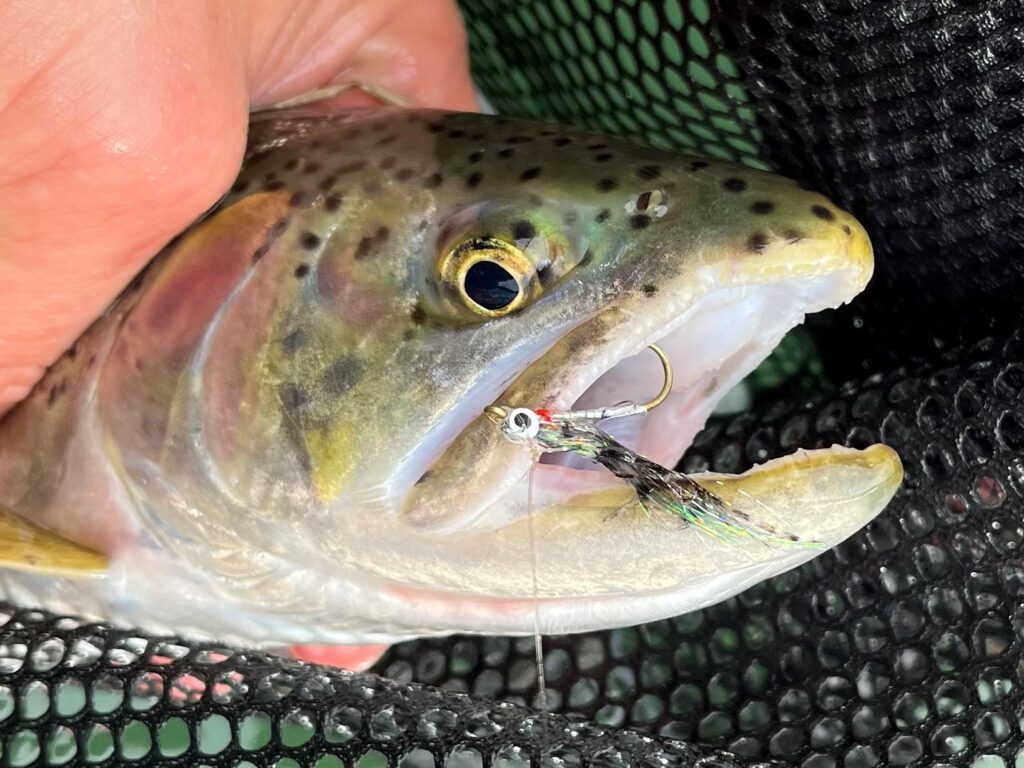Origin: The coastal cutthroat trout (Oncorhynchus clarkii clarkii) or searun cutthroat, is the only subspecies of cutthroat trout in North America that’s born in freshwater, lives in saltwater, then returns to spawn in freshwater. Its native range stretches from Alaska’s Kenai Peninsula south to the Eel River in northern California. The Society’s coastal cutthroat trout broodstock is collected from tributaries of the Fraser River.
Habitat: Coastal cutthroat trout exhibit one of three forms. Non-migratory forms spend their entire lives within a specific small stream or headwater tributary. Freshwater migratory forms remain within larger bodies of freshwater, and migrate to spawn in smaller tributaries or lake outlets. Saltwater-migratory, or searun, forms migrate to the ocean in late winter and early spring to feed on crustaceans and baitfish before returning to freshwater late in the summer. Searun cutthroat trout can spend two to five years in freshwater before their initial seaward migration. Rarely found more than 160 kilometres inland from the ocean, these trout utilize a large variety of habitats, including saltwater estuaries, large and small river systems, sloughs, ponds, and lakes.
Description: Searun and freshwater forms of coastal cutthroat trout differ in appearance. In freshwater, these fish have dark green to greenish-blue backs, olive-green upper flanks, and silvery lower flanks and bellies. They also display numerous spots on their sides below the lateral line, with irregularly-shaped spots on their dorsal, adipose, and caudal fins. In saltwater, and shortly after returning to freshwater, searun trout are silver in colour with bluish backs, yellowish lower flanks and fins, and a minimal display of irregularly-shaped spots. Searun cutthroat have distinctive red or orange linear marks along the underside of their jaws. Cutthroat trout can generally be distinguished from rainbows by the presence of teeth at the base of tongue, and a maxillary (jaw) that extends beyond the posterior edge of the eye.
Fishing: Coastal cutthroat are efficient predators, but can be difficult for anglers to catch. One of the best ways to target these fish is to locate a school of feeding fish. Searun cutthroat can weigh up to two kilograms, while freshwater resident fish are typically much smaller. When in freshwater during fall, winter, and spring, target coastal cutthroat with fly gear, spoons, spinners, or bait.
